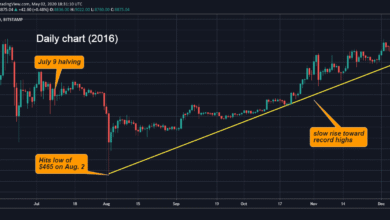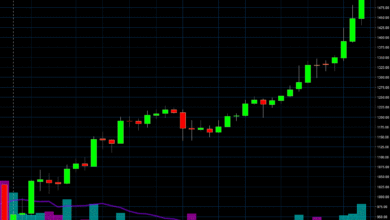Lazarus Group Launders $1.95M in Stolen Ethereum

The Lazarus Group, a notorious North Korean hacking collective, has recently been implicated in a significant financial crime that showcases their sophisticated methods. Blockchain investigator ZachXBT revealed that this group has successfully laundered a staggering $1.95 million in stolen Ethereum through a privacy tool known as Tornado Cash. This incident is part of a broader trend of North Korea hackers leveraging complex strategies to finance their regime’s illicit activities, particularly through cryptocurrency thefts. In a recent attack on May 16, 2025, hackers affiliated with the Lazarus Group pilfered $3.2 million from various Solana accounts, further illustrating their capabilities in stealing cryptocurrency. As investigations unfold, the implications of such activities raise critical questions about cybersecurity and the effectiveness of current measures against these sophisticated cyber criminals.
This situation highlights a pressing concern in the world of digital finance, where state-sponsored cybercriminals are manipulating blockchain technology for their gains. Recently, a group associated with North Korea has been under scrutiny for laundering vast amounts of stolen virtual currency through advanced mixers like Tornado Cash. The ongoing ZachXBT investigation into these North Korean hackers has revealed intricate laundering schemes involving Ethereum, further complicating efforts to track illicit funds. This theft underscores a growing relationship between international cybersecurity threats and cryptocurrency, revealing how these hackers employ advanced techniques to obscure their financial trails. Such developments emphasize the urgent need for enhanced blockchain analytics and regulatory measures to combat the rise of sophisticated financial crimes in the crypto space.
Understanding the Lazarus Group’s Cybercriminal Activities
The Lazarus Group, a notorious hacking collective backed by the North Korean government, has garnered significant attention due to its sophisticated cyberattacks and cryptocurrency thefts. Engaging in various illicit practices, this group exploits vulnerabilities in blockchain technology to finance governmental activities, including weapons programs. Their strategies often involve breaking into exchanges and stealing digital currencies, which they then launder through advanced mixing services like Tornado Cash to obscure any traces of their illicit operations.
Recent investigations, particularly by blockchain forensic experts such as ZachXBT, have shed light on the group’s extensive activities. The Lazarus Group has reportedly been involved in stealing billions of dollars through various schemes, making it one of the most prominent cyber threats in the crypto space. Their criminal activities not only threaten individual investors but also pose significant risks to the overall stability of global financial systems.
The Role of Tornado Cash in Cryptocurrency Laundering
Tornado Cash, an Ethereum-based mixing service, plays a crucial role in the laundering operations carried out by groups like the Lazarus Group. By breaking the on-chain link between the sender and the receiver, Tornado Cash allows criminals to obscure their transaction paths effectively. In the case of the Lazarus Group, approximately $1.95 million in stolen Ethereum was funneled through this mechanism, complicating tracking efforts by authorities.
Using Tornado Cash, actors can deposit large sums of money, which then gets mixed with other funds before being withdrawn, making it nearly impossible for investigators to pinpoint the original source of the funds. This capability has made Tornado Cash a favored tool among cybercriminals and hackers, including those affiliated with North Korea. As blockchain technology continues to evolve, the challenge of addressing such illicit activities becomes more pressing.
ZachXBT’s Investigation into the Lazarus Group
Blockchain investigator ZachXBT has become a pivotal figure in tracing the activities of the Lazarus Group and its illicit financial operations. His recent findings reveal how encrypted transactions were executed to launder stolen funds effectively. After attacking several Solana addresses, resulting in losses exceeding $3.2 million, the Lazarus Group transferred a significant portion of these assets to Ethereum and made use of Tornado Cash to hide their tracks.
By publishing his findings, ZachXBT has not only highlighted the capabilities of the Lazarus Group but has also raised awareness about the broader implications of cybercrime in the cryptocurrency sector. As law enforcement agencies and financial institutions increase their scrutiny over such activities, the need for sophisticated analytical tools becomes evident to combat the evolving methods employed by hackers.
Implications of North Korean Hackers on the Cryptocurrency Landscape
The ongoing operations of North Korean hackers, particularly the Lazarus Group, have severe ramifications for the cryptocurrency landscape. Their ability to steal and launder funds undermines the credibility and security that many investors seek in digital currencies. By continually targeting exchanges and utilizing complex laundering methods like Tornado Cash, they create a lingering sense of uncertainty in the market.
The broader implications also touch on regulatory aspects, as governments around the world grapple with how to manage the evolving threat of cybercrime. With billions of dollars at stake and the potential for future attacks, maintaining robust security and regulatory frameworks is critical in safeguarding digital assets and ensuring the stability of cryptocurrencies as a legitimate financial medium.
Tracking and Tracing the Stolen Assets
As blockchain technology matures, so too does the landscape of tracking stolen assets. The investigation led by ZachXBT into the Lazarus Group demonstrates the intricate balance between privacy, legality, and security within the cryptocurrency realm. While Tornado Cash provides a layer of anonymity for users, this has profound implications when it becomes a tool for laundering stolen funds.
Efforts to trace these assets often highlight the ongoing cat-and-mouse game between investigators and cybercriminals. For instance, the remaining unspent funds associated with the Lazarus Group’s address serve as focal points for blockchain analysts. Their task is to ensure that such illicit funds do not circulate within the broader economy, effectively collaborating across jurisdictions to thwart the actions of cybercriminals.
The Future of Crypto Laundering Tactics
As cybercriminal methods evolve, so too do their tactics for laundering stolen cryptocurrencies. The Lazarus Group has demonstrated a keen understanding of blockchain anonymity tools, like Tornado Cash, to further obfuscate their transactions. Looking ahead, it is likely that they, along with other hacker groups, will continue seeking out new strategies and technologies to evade detection and manage their operations in a constantly shifting landscape.
Emerging technologies such as zk-SNARKs and other privacy-enhancing features being developed within the blockchain space may offer additional avenues for laundering, posing even greater challenges for regulators and law enforcement. Increased sophistication within the industry means that authorities will need to remain vigilant and adaptable to combat these emerging threats in the cryptocurrency environment.
Regulatory Responses to Cybercrime in Cryptocurrency
In response to the rising tide of cybercrime, including the activities of the Lazarus Group, regulatory bodies worldwide are starting to ramp up their efforts to create frameworks that govern cryptocurrency transactions more effectively. This includes implementing stringent measures on mixing services like Tornado Cash, which have become significant facilitators of money laundering. By enforcing compliance and requiring transparency, regulators aim to deter future criminal activities.
Additionally, efforts are being made to enhance collaboration between nations, as cybercrime often transcends borders. International cooperation in surveillance, intelligence sharing, and mutual legal assistance can bolster global efforts to track, trace, and mitigate the impacts of cybercriminal organizations. The challenge, however, remains in finding the right balance between fostering innovation in the cryptocurrency sector and enforcing necessary regulations to maintain security.
Community Awareness on Cybersecurity Practices
As the threats posed by groups like the Lazarus Group continue to grow, raising community awareness regarding cybersecurity practices is crucial. Educating individuals on the risks associated with cryptocurrency investments, including phishing schemes and social engineering attacks, can empower them to take preventive measures against theft. Furthermore, understanding the role of mixers such as Tornado Cash can provide crucial insights into the complexities of digital asset security.
Community-led initiatives, workshops, and resources that focus on safe cryptocurrency practices can significantly mitigate the risks of cybercrime. By fostering a culture of vigilance, individuals can better protect themselves and their assets in a, at times, chaotic digital landscape that is fraught with potential threats from malicious actors.
Technological Advances in Blockchain Security
The advancements in blockchain technology also bring about improved security measures that can help combat activities by hacker groups such as the Lazarus Group. Innovations in smart contract security, multi-signature wallets, and decentralized finance (DeFi) solutions are paving the way for safer cryptocurrency transactions. These developments focus on enhancing transparency and minimizing the risk of unauthorized access to digital assets.
As more users engage with blockchain technology, the demand for robust security features grows. Both developers and users must stay informed about the latest tools and technologies designed to bolster the security framework of cryptocurrencies. By collaborating to enhance security, the crypto community can better protect itself from the pervasive threats posed by cybercriminal organizations.
Frequently Asked Questions
What is the connection between the Lazarus Group and Ethereum laundering?
The Lazarus Group, a North Korean hacking organization, has been linked to laundering $1.95 million worth of stolen Ethereum using Tornado Cash. This process hides the transaction trails, making it challenging for investigators to trace the funds.
How does Tornado Cash facilitate Lazarus Group’s cryptocurrency laundering?
Tornado Cash is a mixer that obscures the origins of Ethereum transactions, allowing groups like the Lazarus Group to launder stolen cryptocurrency without revealing their identities or the source of the funds.
What was the amount stolen by the Lazarus Group during the May 2025 attack?
In the May 16, 2025 attack, the Lazarus Group stole $3.2 million from various Solana addresses, with a significant portion later laundered through Tornado Cash.
Who is ZachXBT and what role does he play regarding the Lazarus Group?
ZachXBT is a blockchain investigator who has uncovered details about the Lazarus Group’s activities, including the laundering of stolen Ethereum and the remaining unspent funds linked to their operations.
What implications does the Lazarus Group’s use of Tornado Cash have for blockchain investigations?
The use of Tornado Cash by the Lazarus Group complicates blockchain investigations because it obfuscates transaction trails, making it more difficult for authorities to trace the flow of stolen funds.
What tracks remain from the Lazarus Group’s Ethereum laundering activities?
After laundering $1.95 million through Tornado Cash, around $1.25 million in DAI and Ethereum remains unspent at an address identified by investigators, providing a potential lead for ongoing investigations.
Why is the Lazarus Group sanctioned by the U.S. Treasury?
The Lazarus Group has been sanctioned by the U.S. Treasury due to its involvement in large-scale cyberattacks aimed at stealing cryptocurrency to fund North Korea’s weapons programs, including extensive operations since 2018.
What are the challenges in tracking Lazarus Group’s cryptocurrency thefts?
Tracking the Lazarus Group’s cryptocurrency thefts is difficult due to their sophisticated methods, including cross-chain laundering and the use of mixers like Tornado Cash, which obscure transaction histories.
| Key Points | Details |
|---|---|
| Incident Summary | Lazarus Group laundered $1.95 million of stolen Ethereum through Tornado Cash. |
| Date of Theft | May 16, 2025, during an attack that resulted in a loss of $3.2 million. |
| Laundering Process | Assets were liquidated, transferred to Ethereum, and deposited into Tornado Cash. |
| Transactions | Two deposits of 400 ETH into Tornado Cash on June 25 and June 27. |
| Remaining Funds | $1.25 million in DAI and Ethereum remains unspent at address 0xa5f. |
| About Lazarus Group | A North Korean state-sponsored hacking group involved in cybercrimes to fund weapons programs. |
| Notable Activities | Engaged in various attacks since 2018, stealing billions and facing U.S. sanctions. |
| Investigation Outlook | Ongoing scrutiny of the $1.25 million while tracing laundering methods. |
| Challenges in Tracing | Tornado Cash complicates tracking due to its ability to obscure transaction trails. |
Summary
The Lazarus Group has become notorious for its sophisticated cyber operations that continuously exploit vulnerabilities in the cryptocurrency ecosystem. The recent laundering of $1.95 million via Tornado Cash highlights the persistent threat posed by North Korean hackers. As authorities strive to uncover the vast amounts of stolen cryptocurrency, understanding the methods and tools used by the Lazarus Group remains crucial in combating their financial criminal activities.




